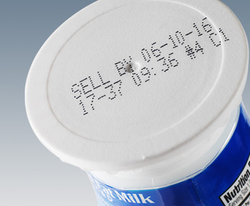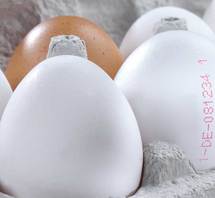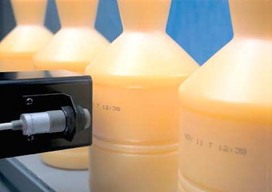While visiting family during the holidays I found myself helping someone bake a homemade apple pie. Everything was going great until she asked me to look in the cabinet for the spices. After fumbling through all of the half-empty spice containers I found the one she needed, but something caught my attention, the date code on the label. It seemed that the “sell by” date was over 25 years ago. Then I realized that many of the other spices had similar dates. Needless to say, we needed another plan after seeing the date code.
While it’s one thing to use old spices, it’s another story altogether when the sell by date is on produce, dairy, meats, and canned goods. The FDA started suggesting product dating during the mid 1980’s and 1990’s. Since then, technology has improved the process during manufacturing as well as for retailers and consumers. Manufacturer and consumers can now track a product from production to retail stores as well as research the date codes of products, all within a few clicks or taps. Manufacturers, retailers, and consumers demand effective date coding on almost every product in the kitchen, not to mention the inevitable requirements from the FDA in the near future.
SSI Packaging Group is a leader in providing cost-effective, high-quality coding and labeling hardware, and software for product coding in almost any industry. We provide the right tools to produce high quality coding on anything from metal, paper, plastic, foil, wood, and more. Product coding is possible though laser marking and coding, inkjet marking and coding, and labeling applicators. It takes precision and expertise to ensure effective product coding that provides information to both the manufacture as well as the consumer.
Examples of Types of Dates on food products include: *
- A “Sell-By” date tells the store how long to display the product for sale. You should buy the product before the date expires.
- A “Best if Used By (or Before)” date is recommended for best flavor or quality. It is not a purchase or safety date.
- A “Use-By” date is the last date recommended for the use of the product while at peak quality. The date has been determined by the manufacturer of the product.
- “Closed or coded dates” are packing numbers for use by the manufacturer.
How safe are products after the “Use by” date expires?
Except for “use-by” dates, product dates don’t always pertain to home storage and use after purchase. “Use-by” dates usually refer to best quality and are not safety dates. Even if the date expires during home storage, a product should be safe, wholesome and of good quality if handled properly. See the accompanying refrigerator charts for storage times of dated products. If product has a “use-by” date, follow that date. If product has a “sell-by” date or no date, cook or freeze the product according to the times on the chart below.
Foods can develop an off odor, flavor or appearance due to spoilage bacteria. If a food has developed such characteristics, you should not use it for quality reasons.
If foods are mishandled, however, foodborne bacteria can grow and, if pathogens are present, cause foodborne illness — before or after the date on the package. For example, if hot dogs are taken to a picnic and left out several hours, they will not be safe if used thereafter, even if the date hasn’t expired.
Other examples of potential mishandling are products that have been: defrosted at room temperature more than two hours; cross contaminated; or handled by people who don’t practice good sanitation. Make sure to follow the handling and preparation instructions on the label to ensure top quality and safety.
What About Dates on Egg Cartons?
Use of either a “Sell-By” or “Expiration” (EXP) date is not federally required, but may be State required, as defined by the egg laws in the State where the eggs are marketed. Some State egg laws do not allow the use of a “sell-by” date.
Many eggs reach stores only a few days after the hen lays them. Egg cartons with the USDA grade shield on them must display the “pack date” (the day that the eggs were washed, graded, and placed in the carton). The number is a three-digit code that represents the consecutive day of the year starting with January 1 as 001 and ending with December 31 as 365. When a “sell-by” date appears on a carton bearing the USDA grade shield, the code date may not exceed 45 days from the date of pack.
Always purchase eggs before the “Sell-By” or “EXP” date on the carton. After the eggs reach home, refrigerate the eggs in their original carton and place them in the coldest part of the refrigerator, not in the door. For best quality, use eggs within 3 to 5 weeks of the date you purchase them. The “sell-by” date will usually expire during that length of time, but the eggs are perfectly safe to use.
Next week we will explore the codes on cans, storage times and offer storage suggestion times for refrigerated products.
To speak with a date code specialist, please call 804.649.1111. or email sales@ssipackaging.com



